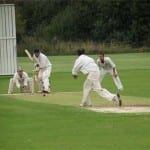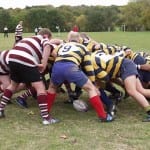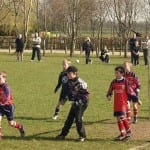Playing Pitch Strategies
Since we were founded in 2001, we at Ploszajski Lynch Consulting (PLC) have carried out a large number of playing pitch assessments and strategies. These have been for local authorities ranging from large, inner city councils such as the London Borough of Newham to small rural areas including Suffolk Coastal DC.
Initially, playing pitch assessments were part of comprehensive leisure strategies, then compiled using Planning Policy Guidance 17 (PPG17) methodology and since 2013 following Sport England’s Playing Pitch (PPS) and Assessing Needs and Opportunities Guidance (ANOG).
Over this time we have developed and evolved our approach to the development of assessments and strategies. These now include comprehensive data compilation and transfer arrangements, the use of GIS for mapping and data analysis and greater emphasis on scenario testing to examine strategic options. Current pitch strategies have a more explicit link to Local Plans and council planning departments are now far more involved in PPS studies. Since late 2018 playing pitch strategies are now closely linked to Local Football Facility Plans (LFFPs) with a requirement that they are mutually consistent.
 In addition to assessing the supply-demand balance for formal pitches, we also place emphasis on the need for informal and small-sided provision for the major team games. Traditional, Saturday afternoon adult participation is in decline across the country, but there has been a growth in shorter formats such as T20 and tapeball cricket, five-a-side and walking football and touch-rugby. An example is our recommendation at Newham for provision of free to access artificial cricket wickets to meet the demands of the local, south Asian community.
In addition to assessing the supply-demand balance for formal pitches, we also place emphasis on the need for informal and small-sided provision for the major team games. Traditional, Saturday afternoon adult participation is in decline across the country, but there has been a growth in shorter formats such as T20 and tapeball cricket, five-a-side and walking football and touch-rugby. An example is our recommendation at Newham for provision of free to access artificial cricket wickets to meet the demands of the local, south Asian community.
 At all times we seek to ensure that the development of a playing pitch strategy is consistent with the National Planning Policy Framework and extant borough and district level Local Plans. PLC’s strategies form part of the evidence base for Local Plans, Infrastructure Delivery Plans and other relevant plans. The outcomes of the strategy, including justified standards of provision, can be used to inform Pre-Applications discussions, guide subsequent negotiations with developers (including s106/CIL) and provide clear advice to development management in the preparation of planning committee reports. We aim to produce strategies that are provide justified evidence in support of Examinations in Public and are robust in the face of challenges from Planning Appeals.
At all times we seek to ensure that the development of a playing pitch strategy is consistent with the National Planning Policy Framework and extant borough and district level Local Plans. PLC’s strategies form part of the evidence base for Local Plans, Infrastructure Delivery Plans and other relevant plans. The outcomes of the strategy, including justified standards of provision, can be used to inform Pre-Applications discussions, guide subsequent negotiations with developers (including s106/CIL) and provide clear advice to development management in the preparation of planning committee reports. We aim to produce strategies that are provide justified evidence in support of Examinations in Public and are robust in the face of challenges from Planning Appeals.
Examples of recent projects include: –
- Epsom and Ewell Borough Council: We are currently at stage C of a project to produce parallel strategies for playing pitches and built sports facilities. These studies have been prompted by the new Local Plan which anticipates a population increase of 20% (16,000 people) by 2036 with concomitant increases in demand for sports facilities. Interestingly, the borough imports a high level of demand from neighbouring local authorities. Emerging issues are a need to increase ‘3G’ pitch provision, to work with neighbours to manage cross boundary patterns of participation and to address the high proportion of pitches on education sites in the borough which do not have secured community use.
- Spelthorne Borough Council: in 2019 PLC completed playing pitch strategy for Spelthorne BC in north Surrey. This is direclty linked to the new Local Plan which looks to make provision for a large population increase expectded between now and 2032. Emerging issues were a shortage of 3G pitches in the borough and the need to increase capacity for local cricket clubs. Seeking secured access to school sites is a priority for the future.
- Elmbridge Borough Council: In 2019 PLC finalised a playing pitch strategy for the council. The project involves an analysis of the role that playing pitch site allocations in the district could play in meeting identified needs. This project followed a previous commission to produce a PPs for the borough.
- East Cambridgeshire District Council: PLC has just completed our Stage D report on playing pitch and outdoor facilities strategies. The Council provides no pitches of its own, so the involvement of club and parish council providers has been key to developing a comprehensive action plan. The strategy will form part of the evidence base for the new Local Plan and includes a mechanism for determining developer contributions towards pitch and facilities provision in areas of housing growth. Key issues are the need to provide additional ‘3G’ football pitches and increased pitch capacity for rugby union.
- Runnymede Borough Council: In 2019, PLC a playing pitch and outdoor sports facilities strategy for the council. This identified shortages in a number of areas particularly for ‘3G’ and youth football pitches. The council is now implementing the agreed action plan.
- South Holland District Council: In 2019 PLC completed a sports facility and playing pitch strategy for South Holland in Lincolnshire using Sport England’s ANOG and PPS guidance. This is part of a comprehensive service review which is guiding the new leisure management contract and also forms part of the Local Plan evidence base.
- Waverley Borough Council: PLC worked with Waverley BC on their PPS which identified shortages of pitches for junior football and mini-soccer. It also pointed to a strong cricket network in the borough but with many clubs having no security of tenure on their grounds.
- London Borough of Newham: Following our successfuil cricket facilities strategy we completed a wider playing pitch strategy for the council. The project involved assessing needs in an inner-city area with unconventional supply and demand patterns. For example, only 10% of football demand comes from teams affiliated to the FA.
- Suffolk Coastal District Council: PLC completed a playing pitch and sports facilities strategy for this rural council. Many of the pitches are on single pitch sites located alongside village halls with associated difficulties in maintaining standards and preventing unauthorised use. The assessment involved detailed consultation with the local community, town and parish councils and sporting stakeholders. It was signed off by the council as being part of their suite of evidence documents supporting the Local Plan.
- Bedford Borough Council: PLC worked with the counci on a playing pitch strategy alongside a built facilities strategy. We consulted widely with local stakeholders including parish councils, schools, clubs, teams and leagues. Parish council consultations were particularly important as they are key providers of facilities in the rural parts of the borough. We recognised the different demography and patterns of participation in the urban area of Bedford compared with the rural hinterland. In particular the increasing demand for cricket facilities in the town (bucking the national trend) and falling demand for adult football in rural areas. We are pleased that since the strategy was produced, the council and its partners have addressed two of the key issues it identifies. The acknowledged shortage of ‘3G’ pitches resulted in the construction of a new facility at Mark Rutherford School. The overuse of Bedford Athletic RFC’s pitches led to Bedford Tigers Rugby League Club acquiring their own ground at Great Ouse Way.
- Waveney District Council: PLC completed a playing pitch and outdoor sports facilities strategy for the council. The project involved an analysis of the role that playing pitch site allocations in the district could play in meeting identified needs.

